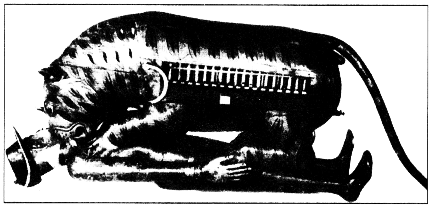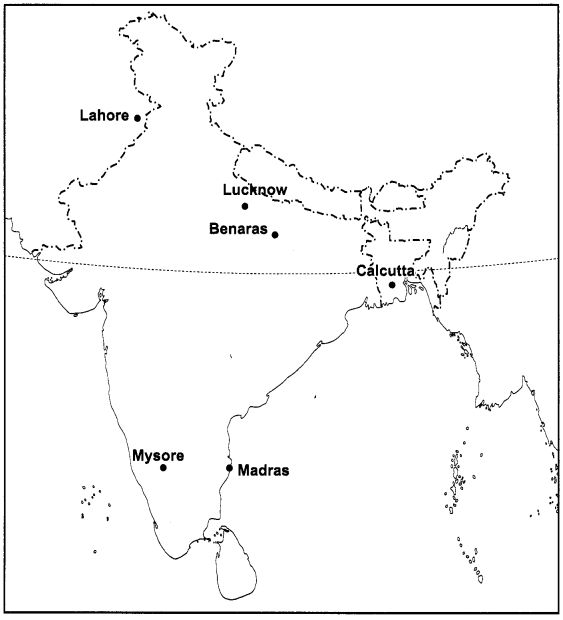From Trade to Territory Class 8 Extra Questions and Answers Social Science History Chapter 2 CBSE Pdf free download are part of Extra Questions for Class 8 Social Science. Here we have given NCERT Extra Questions for Class 8 Social Science SST History Chapter 2 From Trade to Territory.
You can also practice NCERT Solutions for Class 8 History Chapter 2 Questions and Answers on LearnInsta.com.
From Trade to Territory Class 8 Extra Questions and Answers Social Science History Chapter 2
From Trade to Territory Class 8 Extra Questions Very Short Answer Type
Question 1.
In which year did Aurangzeb died?
Answer:
Aurangzeb died in the year 1707.
Question 2.
Who led the Revolt of 1857 from the Mughal emperors?
Answer:
Among the Mughal emperors, the last Mughal king Bahdur Shah Zafar led the Revolt of 1857.
Question 3.
In which year did East India Company get the Royal Charter from kingship of England and who was the ruler of England at that time?
Answer:
In 1600, East India Company got the royal Charter from Kingship and Queen Elizabeth – I was the ruler of England.
Question 4.
Who was the Ist explorer from Portugal?
Answer:
Vasco da Gama was the Ist Explorer from Portugal in 1498.
Question 5.
What was reason behind the battles between the European trading companies.
Answer:
The reason behind the battles among the European trading companies was the rising competition.
Question 6.
Where was the Ist factory of British East India Company established and in which year?
Answer:
Ist English factory was established on the banks of river Hugli in the year 1651.
Question 7.
What is Factory according to the colonial time period in India?
Answer:
Factory was a place from where the factors were operated and it had a warehouse where goods for export were stored.
Question 8.
What was the Farman issued by Aurangzeb to the Company?
Answer:
Farman granted Right to trade duty-free to the Company.
Question 9.
Who was the Nawab of Bengal at the time of Battle of Plassey?
Answer:
Sirajuddaulah was the Nawab of Bengal at the time of Battle of Plassey.
Question 10.
Who was the commander of Sirajuddaulah who cheated him at the time of Battle of Plassey?
Answer:
Mir Jafar was the commander who cheated Sirajuddaulah at the time of Battle of Plassey.
Question 11.
In which year was the Company appointed as the Diwan of Bengal by the Mughal Emperor?
Answer:
In the year 1765, the Company was appointed as the Diwan of Bengal by the Mughal Emperor.
Question 12.
What was the outcome of the appointment of the Company as the Diwan of Bengal?
Answer:
Appointment of the Company as Diwan of Bengal resulted in the beginning of exploitation of the vast revenue of the Bengal.
Question 13.
How many wars were fought between Mysore Kingdom and the Britishers?
Answer:
Four Wars were fought between Mysore and Britishers.
Question 14.
Mention the time period in which prolonged war was fought between the Britishers and Afghanistan?
Answer:
1838 – 1842 was the time period when the prolonged war was fought and the Company rule was established in Afghanistan.
Question 15.
Name of the Governor-general who introduced several administrative reforms.
Answer:
Warren Hastings was the Governor-General who introduced several administrative reforms.
Question 16.
What was the main aim of the Company before the territorial expansion?
Answer:
Trading and earning profit from trade was the main aim of the Company before the territorial expansion.
Question 17.
Who was established as Nawab in replacement of Mir Jafar?
Answer:
Mir Qasim was installed as the Nawab in place of Mir Jafar.
Question 18.
Which state was annexed by the Company on the ground of misgovernance?
Answer:
Awadh was annexed by the Company on the ground of misgovernance.
Question 19.
Name country from which Tipu Sultan established a great relation.
Answer:
The French was the country from which Tipu established a great relation.
Question 20.
Mention the states which were annexed on the basic of ‘Doctrine of Lapse’ policy.
Answer:
Satara, Sambalpur, Udaipur, Nagpur and Jhansi were the states annexed on the basis of this policy.
Question 21.
Define the word ‘Charter’?
Answer:
An offficial order is called charter.
Question 22.
When was the Battle of Buxar fought?
Answer:
The Battle of Buxar was fought in 1764.
Question 23.
Mention the period of Lord Dalhousie as Governor-General of India.
Answer:
From 1848 – 1856, Lord Dalhousie was the Governor-General of India.
From Trade to Territory Class 8 Extra Questions Short Answer Type
Question 1.
Mention the aftermath of the death of Aurangzeb in 1707?
Answer:
Aurangzeb died in 1707 which resulted in:
- Establishment of several regional kingdoms.
- Governors under the Mughals took over the control over states.
- Existence of several regional kingdoms was seen.
Question 2.
It is said that before the Britishers, the Portuguese already got established in India. Explain how?
Answer:
Yes, the Portuguese had been settled in India before the establishment of the Britishers as in 1498, a Portuguese explorer named Vasco da Gama discovered the sea route to India resulting in establishment of base at Goa.
Question 3.
What were the things which India had for the purpose of trade?
Answer:
India had several things from which trade of the East India Company got wide and the rate of their profit got maximised. Those things were pepper, cloves, cardamom and cinnamon.
Question 4.
What did the Company on its part declare about the Nawabs of Bengal?
Answer:
The Company on its part declared that the unjust demands of the Nawabs were ruining their trade and they could only trade when the duties would be removed from them. It was convinced that to expand trade the Company had to enlarge its settlements, buy up villages and rebuild its forts.
Question 5.
Why did Warren Hasting go through the impeachment process?
Answer:
When Hastings went back to England in 1785, Edmund Burke accused him of being involved and at individual level responsible for misgovernment of Bengal. This led to an impeachment process against Warren Hastings.
Question 6.
How did the new policy of paramountcy get challenged in Kitoor?
Answer:
When the British tried to annex the small state of Kitoor (in Karnataka today) Rani Channamma took arms in her hands and led an anti-British resistance movement. But after she died in prison, Rayanna a poor chowkidar of Sangoli in Kitoor carried on challenging the policy of the British.
From Trade to Territory Class 8 Extra Questions Long Answer Type
Question 1.
Name the policy devised by Lord Dalhousie for annexation purpose and explain how it worked and also name states annexed under this policy.
Answer:
Lord Dalhousie was the Governor-General from 1848 – 1856 and he was reason behind the final wave of annexations. He devised a policy that came to be known as Doctrine of Lapse. The policy declared that if an Indian ruler died without any male heir, his kingdom would lapse and that will become part of the Company territory.
The states which were annexed under this policy were:
Satara (1848), Sambalpur (1850), Udaipur (1852), Nagpur (1853), and Jhansi (1854).
Question 2.
How did the Mysore grow in strength under the leadership of its powerful rulers Haidar Ali and Tipu Sultan?
Answer:
Mysore had grown in strength under the kingship of the powerful rulers Haidar Ali (1761 – 1782) and his son Tipu Sultan (1782 – 1799). Tipu was also called ‘The Tiger of Mysore’. Mysore controlled the powerful trade of Malabar coast from where the Company purchased pepper and cardamoms.
Tipu stopped the export of sandalwood, pepper and cardamom through ports of his kingdom and disallowed the local merchants from trading with the Company. He also established a close relationship with the French in India and modernised his army with their help. This is how Mysore got strengthen under the kingship of Haidar Ali and Tipu Sultan.
Question 3.
Explain the policy of Paramountcy, also explain the struggle of Kitoor in challenging this aggressive policy.
Answer:
The Company adopted an aggressive policy of territorial expansion. Under Hastings (1813 – 1823)
Governor Generalship, a new policy of paramountcy was initiated with which the Company claimed that its authority was paramount and supreme so the power of the Company was greater than that of Indian states. So in order to protect the Company’s interest it was justified annexing or threatening of annexation to the Indian states. This policy and its aim continued to guide the later British policies as well.
The struggle of Kitoor challenging this policy was really commendable. When the British tried to annex the small state of Kitoor in Karnataka, Rani Channamma took to arms and led an anti-British resistence movement. She got arrested in 1824 and died in prison in 1829. After her Rayanna, a poor chowkidar of Sangoli in Kitoor carried on resistence. With popular support many British camps and records were destroyed by him. He was later caught and hanged by the British in 1830. This is the struggle of Kitoor.
Picture Based Questions Class 10 History Chapter 2 From Trade to Territory
Look at the picture given below and answer the following questions:

Question 1.
Describe briefly about the picture given above.
Answer:
The picture does represents ‘toy tiger’ of Tipu Sultan the great warriors. The picture is kept in the Victoria and Albert museum in London. The Britishers had took it away. When Tipu Sultan died while defending his capital Sheringpatnam on 4th May 1798.
Map Skills Class 8 History Chapter 2 From Trade to Territory
Question 1.
On the outline map of India represent the following under British rule.
(i) Lahore
(ii) Lucknow
(iii) Benaras
(iv) Calcutta
(v) Madras
(vi) Mysore
Answer:
